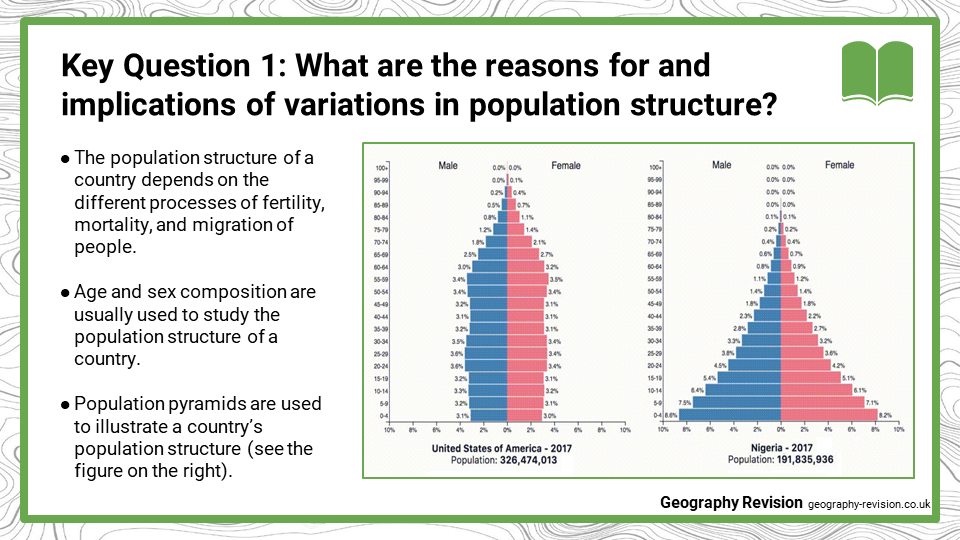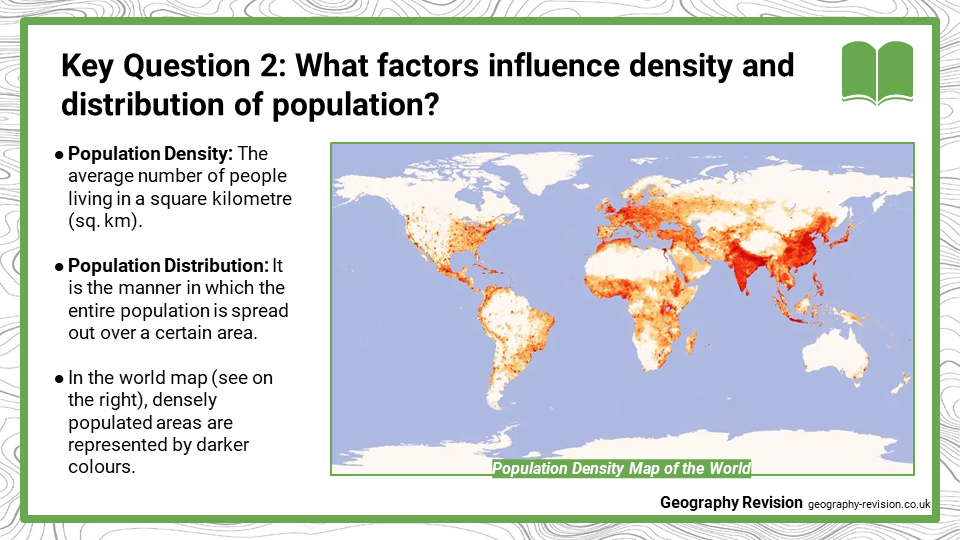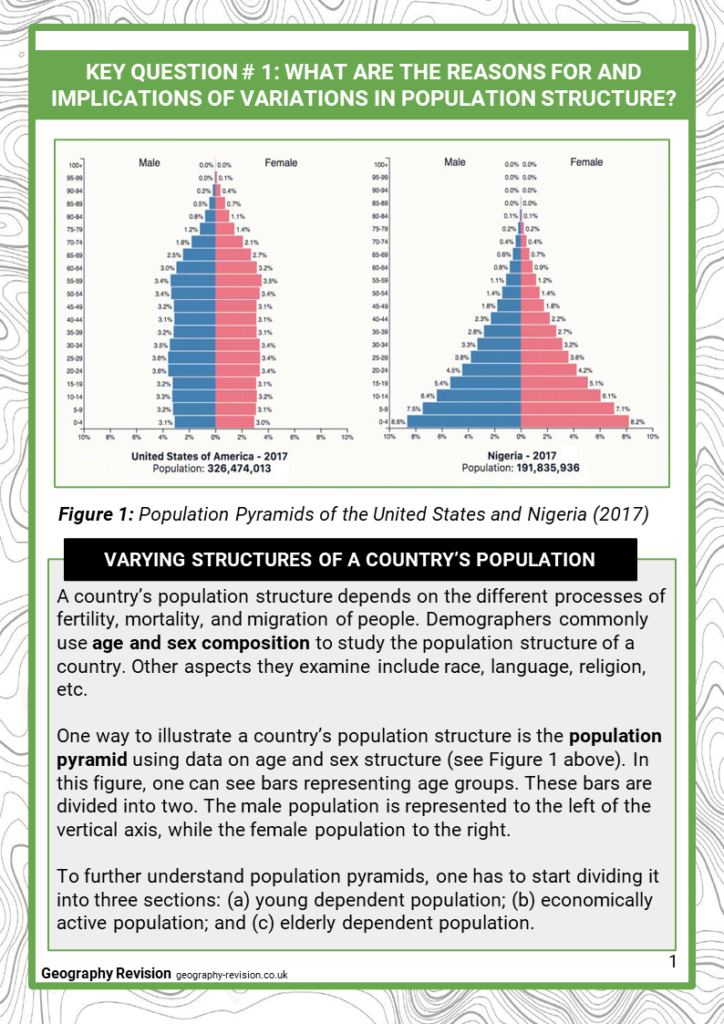Download the GCSE Geography Population Studies: Population Structure, Density, and Settlements Resources module
This module contains:
- An editable PowerPoint lesson presentation
- Editable revision handouts
- A glossary which covers the key terminologies of the module
- Topic mindmaps for visualising the key concepts
- Printable flashcards to help students engage active recall
- A quiz with answer key to test knowledge and understanding of the module

Population Studies: Population Structure, Density, and Settlements
Differences in population structures within countries can be driven by a high level of rural-urban migration, and these are evident in population pyramids. Migration from rural areas is usually from young adults (whether single or with children), which results in a decrease in the number of people in this age group. On the other hand, urban areas will see an increase in the number of young adults due to in-migration.
This GCSE Population Studies module introduces population structure, density, and settlements to your students, explaining:
- What are the reasons for and implications of variations in population structure?
- What factors influence density and distribution of population?
- Which country has a high dependent population? (Case Study of High Dependent Population in The Gambia)
- What are the main patterns of settlement?
- What are settlement hierarchies and its implications to service provision?
More Population Studies Modules
Population Structure, Density, and Settlements is one lesson in our Population Studies module. The other theory lessons can be found below:




